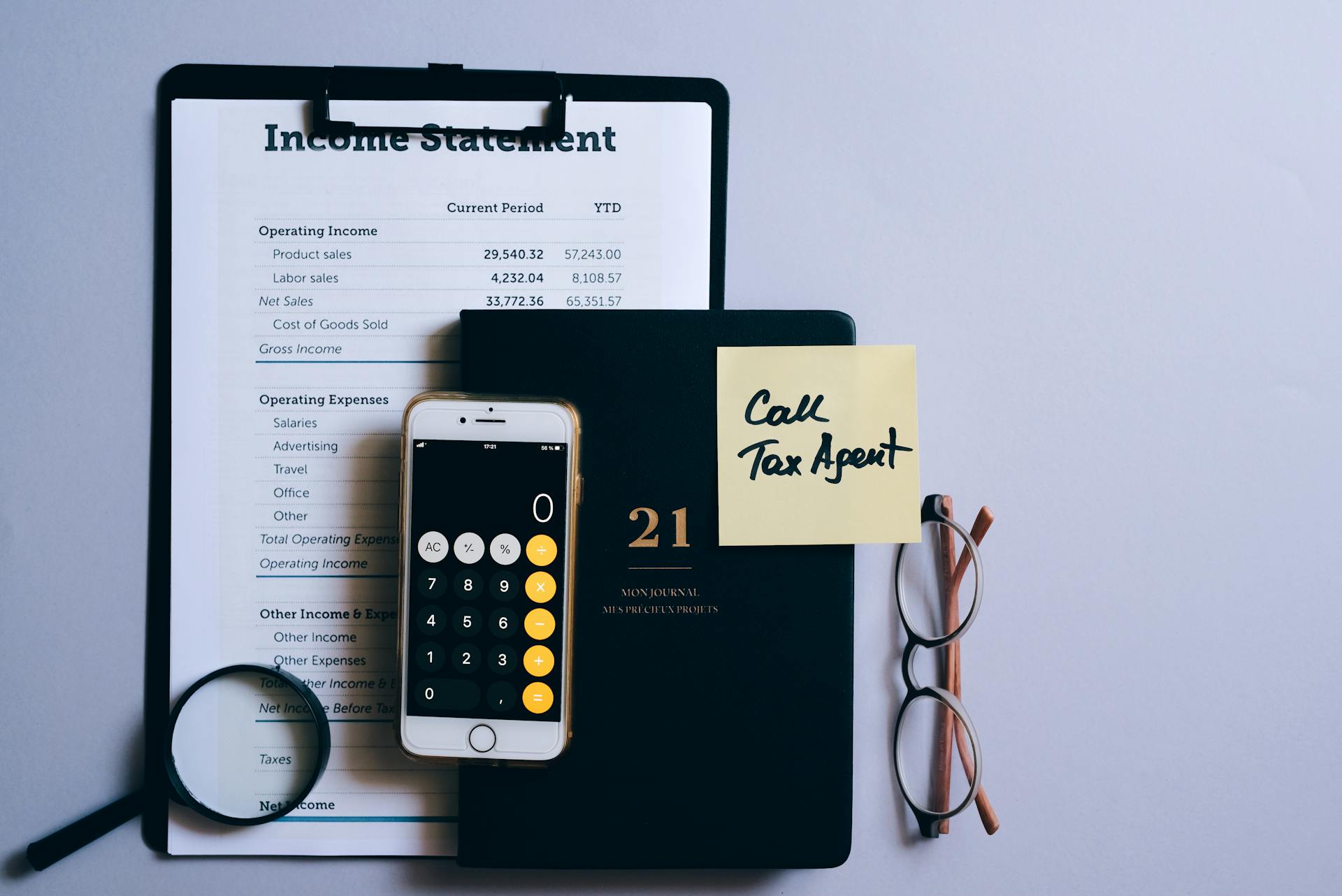
A bank passbook is a record of your bank account transactions, and it's a crucial tool for managing your finances. It's usually a booklet or a digital file that your bank provides, and you should keep it safe and up-to-date.
Your passbook will typically have several sections, including a register of deposits, a register of withdrawals, and a balance sheet. The register of deposits will list all the money you've deposited into your account, while the register of withdrawals will list all the money you've taken out.
You should regularly review your passbook to ensure that all transactions are accurate and up-to-date. This will help you catch any errors or discrepancies, and prevent any potential problems with your account.
Account Management
Managing your bank passbook account is a breeze. You can easily keep track of your transactions by regularly checking your passbook.
To ensure your account is secure, banks usually require you to sign the passbook. This signature serves as proof of ownership.
You can also use your passbook to monitor your account balance and identify any discrepancies. This helps you catch any errors or suspicious activity early on.
Withdrawing from a Savings Account

You can't withdraw money from a passbook savings account via an ATM, so you'll need to visit a bank branch with your passbook to complete the transaction.
Visiting a bank branch might seem inconvenient, but it's a feature of passbook accounts that many people like. It allows for personalized banking services and in-person support for managing your account.
To withdraw money, you'll need to work with a teller at the bank branch, and they'll record the transaction in your physical passbook. This is an important step, as it keeps your account records up to date.
In the past, withdrawals required a debit slip or withdrawal slip to be prepared and signed, and the teller would check the signature against the signature card at the branch. This process ensured that only authorized account holders could access their money.
Today, many banks use PIN verification and automated teller machines to verify customer identities, making the withdrawal process faster and more convenient.
Writing to a Bank Manager

Writing to a bank manager is a crucial part of account management, and it's essential to do it correctly to avoid any issues. The format of writing an application to the bank manager for a new passbook is quite straightforward.
To start, you'll need to include your from address, date, to address, subject, salutation, body of the letter, and complimentary close. This is the basic structure of a formal letter.
When requesting a new passbook, it's essential to mention your account details, such as your account number and the reason for requesting a new passbook. You can use a sample letter as a guide to help you write your own application.
Here's a breakdown of the key components to include in your letter:
- From address: Include your name and address
- Date: Write the current date
- To address: Include the bank's address
- Subject: Clearly state the purpose of the letter, such as "Request for issuing a new bank passbook"
- Salutation: Use a formal greeting, such as "Dear Sir/Madam" or "To Whom It May Concern"
- Body of the letter: Explain the reason for requesting a new passbook and include your account details
- Complimentary Close: End the letter with a formal closing, such as "Yours faithfully" or "Sincerely"
Remember to keep your letter concise and to the point, and make sure to proofread it carefully before submitting it to the bank.
Cathay
Cathay Bank offers a passbook savings account with a competitive variable interest rate of 0.03%-0.05% (as of 01/11/25), making it a great option for those looking for a low-risk investment.

The minimum deposit to open a Cathay Bank account is just $100, which is very accessible to most people.
To earn the highest APY, you'll need to maintain a balance of at least $50,000.
If your balance falls below $500, you'll be charged a monthly maintenance fee of $3.
Cathay Bank passbook savings account details:
Cathay Bank has locations in several states, including California, Illinois, Maryland, Massachusetts, Nevada, New Jersey, New York, Texas, and Washington.
Account Types
A bank passbook is a great way to keep track of your finances, and understanding the different types of accounts is essential. There are several types of accounts, including Savings Account and Current Account.
A Savings Account is designed for long-term savings, and it typically earns interest on your deposits. This type of account is perfect for those who want to save money for future goals.
Current Accounts, on the other hand, are designed for everyday transactions, and they often come with debit cards and checkbooks.
Account Information

A passbook is a small booklet issued by banks to account holders, serving as a physical record of all transactions made in the savings account.
This tangible record provides a clear overview of one's financial activities, making it easy to see every deposit and withdrawal.
A passbook is particularly useful for those who prefer having a record of their transactions in a physical format.
What Is?
A passbook is a small booklet issued by banks to account holders, serving as a physical record of all transactions made in the savings account.
To open a passbook savings account, you'll first need to find a bank offering one, and comply with its minimum deposit requirements, which could be as low as $25 or as high as $500 depending on your financial institution.
You can also open a passbook savings account online, but you may need to provide some personal identifying details including your driver's license number and your Social Security number.

The bank provides you with a physical passbook that you'll need to manage your money, and you'll benefit from personalized banking services when you visit a teller to complete transactions.
To add credit to an account, you can fill a small credit slip or deposit slip, which the teller will then count and check before crediting the account.
You can also request a new passbook if all pages have been filled or if you lost/misplaced your passbook, and you'll need to mention the reason clearly and provide necessary documents for the bank's reference.
Understanding how to get a bank passbook online is crucial in today's fast-paced world, as it saves time and effort, allowing you to manage your banking needs without having to visit the branch.
Return
If you need a new bank passbook, you can request one by contacting your bank directly, like Divya Agarwal did, mentioning your account number and the last date your passbook was updated.
The last date your passbook was updated is an important detail to provide, as seen in Divya's example, where it was mentioned as 28th February, 2022.
You can request a new passbook at the earliest, just like Divya asked, if you're running short of pages in your current passbook.
Frequently Asked Questions

You can access your account information by signing in to your account on our website. This is the first step in managing your account.
Your account information is stored securely and is only accessible by you. We use encryption to protect your data.
If you're having trouble accessing your account, try resetting your password. This can usually be done by clicking on the "Forgot Password" link on the login page.
You can also update your account information by editing your profile. This includes changing your email address, phone number, and other contact details.
Remember to keep your account information up to date to ensure you receive important notifications and updates from us. This will also help us to contact you if there are any issues with your account.
If you have any questions or concerns about your account information, feel free to contact our support team. We're here to help.
Frequently Asked Questions
Do banks still give passbooks?
Yes, some banks still offer passbooks, particularly for passbook savings accounts, which come with a physical notebook to record transactions. However, many banks now offer digital alternatives to traditional passbooks.
What is a disadvantage of a passbook savings account?
A disadvantage of a passbook savings account is that you can't access your money electronically, requiring in-person visits to a branch. This also means you can't easily view account information online.
Featured Images: pexels.com


